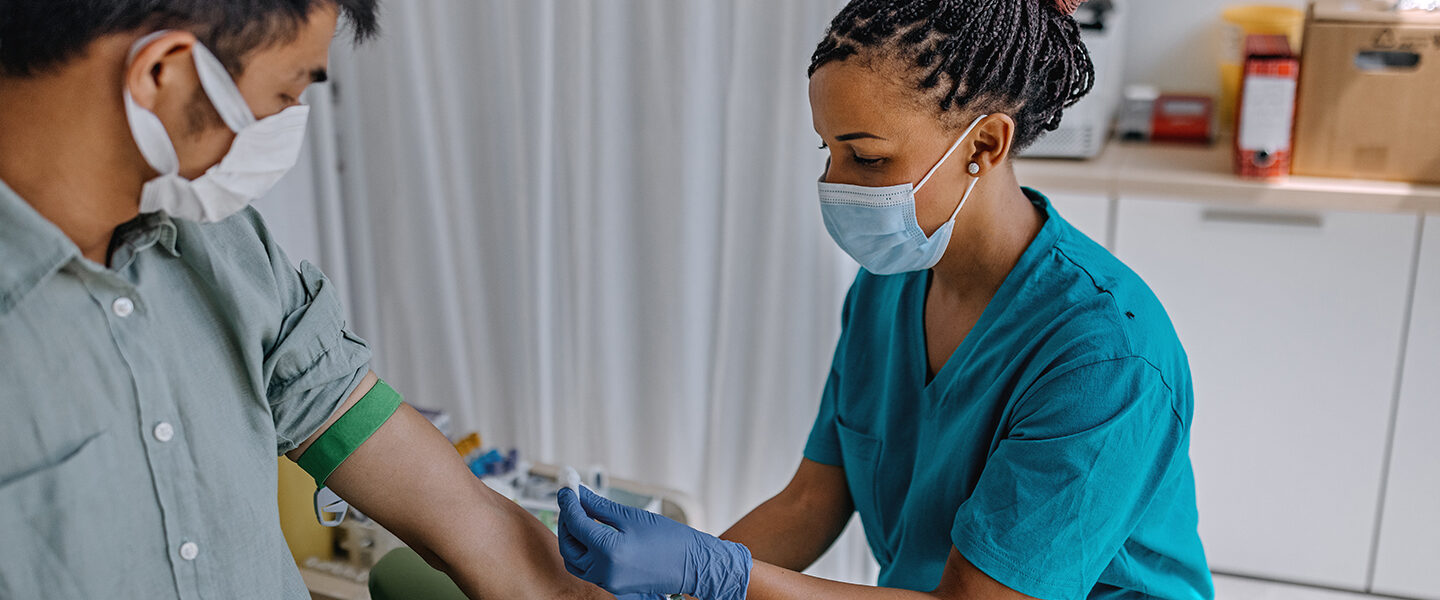A Biased View of Northeast Medical Institute - New Haven Campus Phlebotomy Course & Cna Class
A Biased View of Northeast Medical Institute - New Haven Campus Phlebotomy Course & Cna Class
Blog Article
What Does Northeast Medical Institute - New Haven Campus Phlebotomy Course & Cna Class Do?
Table of ContentsThe Ultimate Guide To Northeast Medical Institute - New Haven Campus Phlebotomy Course & Cna ClassIndicators on Northeast Medical Institute - New Haven Campus Phlebotomy Course & Cna Class You Should KnowNortheast Medical Institute - New Haven Campus Phlebotomy Course & Cna Class for BeginnersWhat Does Northeast Medical Institute - New Haven Campus Phlebotomy Course & Cna Class Do?The smart Trick of Northeast Medical Institute - New Haven Campus Phlebotomy Course & Cna Class That Nobody is Talking AboutSome Known Facts About Northeast Medical Institute - New Haven Campus Phlebotomy Course & Cna Class.
Nevertheless, using such tools need to be come with by other infection prevention and control techniques, and training in their use. Not all safety gadgets apply to phlebotomy. Before choosing a safety-engineered gadget, individuals must thoroughly explore offered gadgets to determine their proper usage, compatibility with existing phlebotomy practices, and efficacy in safeguarding team and people (12, 33).For settings with reduced sources, price is a driving consider procurement of safety-engineered devices - CNA Training. Where safety-engineered gadgets are not offered, competent usage of a needle and syringe serves. Unintentional exposure and details information about an occurrence must be videotaped in a register. Assistance services must be advertised for those who undergo unexpected direct exposure.
labelling); transportation conditions; interpretation of results for professional administration. In an outpatient department or facility, supply a devoted phlebotomy workstation containing: a tidy surface area with two chairs (one for the phlebotomist and the other for the patient); a hand wash basin with soap, running water and paper towels; alcohol hand rub. In the blood-sampling space for an outpatient department or clinic, offer a comfy reclining couch with an arm remainder.
5 Easy Facts About Northeast Medical Institute - New Haven Campus Phlebotomy Course & Cna Class Shown
Make certain that the indications for blood tasting are clearly specified, either in a composed procedure or in documented instructions (e.g. in a laboratory form). In all times, follow the approaches for infection avoidance and control provided in Table 2.2. Infection avoidance and control methods. Accumulate all the equipment needed for the procedure and place it within safe and simple reach on a tray or trolley, ensuring that all the items are plainly visible.
Present on your own to the client, and ask the person to mention their complete name. Check that the research laboratory kind matches the patient's identity (i.e. match the person's information with the laboratory kind, to make sure precise recognition).
Make the person comfy in a supine setting (when possible). Place a clean paper or towel under the individual's arm. Review the test to be executed (see Annex F) and obtain spoken consent. The patient has a right to refuse a test at any moment prior to the blood tasting, so it is necessary to guarantee that the patient has understood the treatment.
Indicators on Northeast Medical Institute - New Haven Campus Phlebotomy Course & Cna Class You Should Know
Expand the patient's arm and examine the antecubital fossa or forearm. Situate a vein of a great size that shows up, straight and clear. The diagram in Section 2.3, reveals usual positions of the vessels, yet many variations are possible. The mean cubital vein exists between muscular tissues and is usually one of the most very easy to pierce.
DO NOT place the needle where veins are drawing away, due to read the article the fact that this enhances the opportunity of a haematoma. Finding the blood vessel will assist in establishing the right size of needle.
Samplings from central lines carry a danger of contamination or erroneous lab examination results. It is appropriate, yet not optimal, to draw blood samplings when first introducing an in-dwelling venous tool, prior to linking the cannula to the intravenous fluids.
The Basic Principles Of Northeast Medical Institute - New Haven Campus Phlebotomy Course & Cna Class
Allow the location to completely dry. Failing to enable sufficient contact time increases the threat of contamination. DO NOT touch the cleansed site; in specific, DO NOT place a finger over the capillary to direct the shaft of the revealed needle. It the site is touched, repeat the disinfection. Perform venepuncture as adheres to.
Ask the patient to create a fist so the capillaries are more prominent. Get in the capillary quickly at a 30 degree angle or less, and remain to present the needle along the vein at the easiest angle of entry - Phlebotomy Classes. When enough blood has actually been collected, launch the tourniquet BEFORE taking out the needle
Northeast Medical Institute - New Haven Campus Phlebotomy Course & Cna Class Can Be Fun For Anyone
Withdraw the needle gently and use gentle stress to the website with a tidy gauze or completely dry cotton-wool ball. Ask the person to hold the gauze or cotton woollen in position, with the arm expanded and elevated. Ask the patient NOT to bend the arm, due to the fact that doing so causes a haematoma.

What Does Northeast Medical Institute - New Haven Campus Phlebotomy Course & Cna Class Do?
Do not press the syringe bettor because added pressure increases the risk of haemolysis. Where feasible, maintain the tubes in a shelf and move the rack in the direction of you. Inject downwards into the appropriate coloured stopper. DO NOT get rid of the stopper because it will launch the vacuum. If the sample tube does not have a rubber stopper, inject incredibly gradually right into the tube as reducing the stress and velocity utilized to transfer the specimen reduces the risk of haemolysis.

Report this page